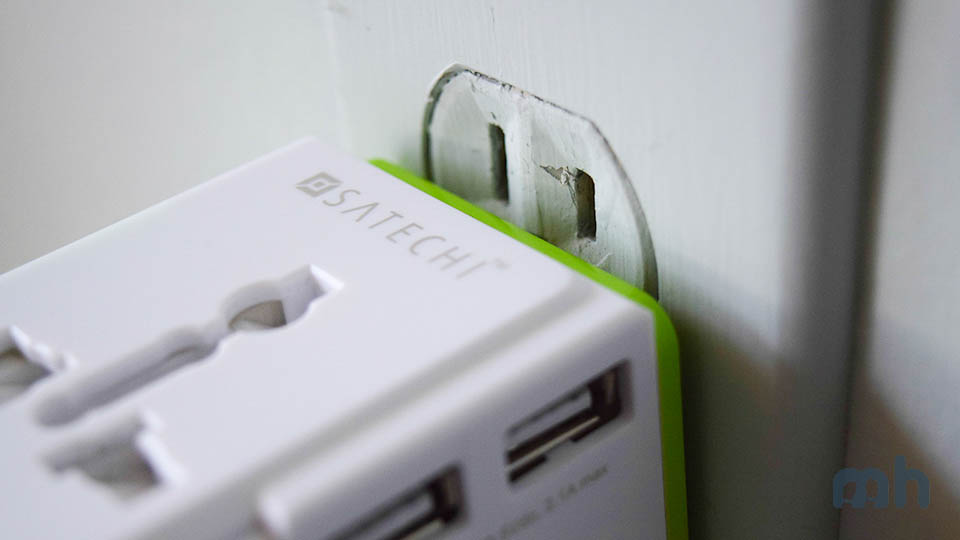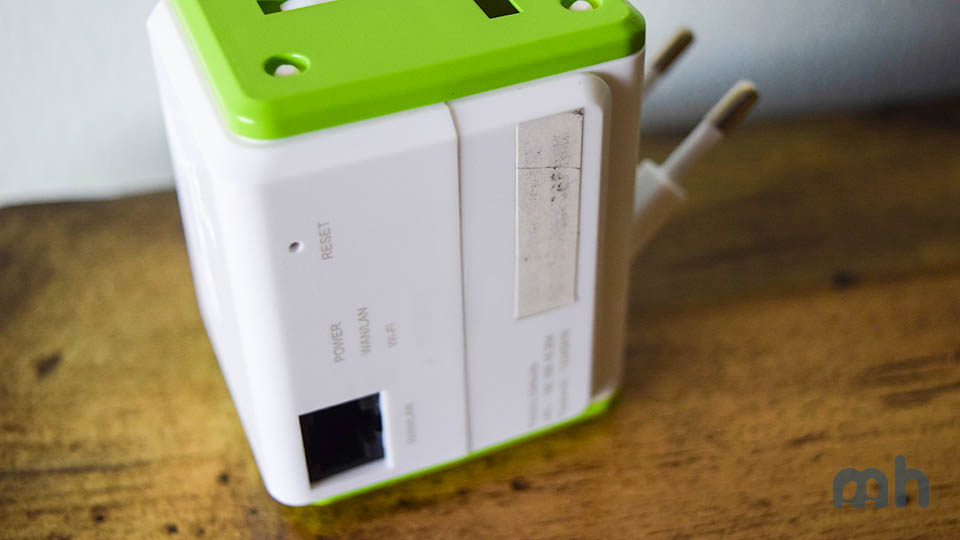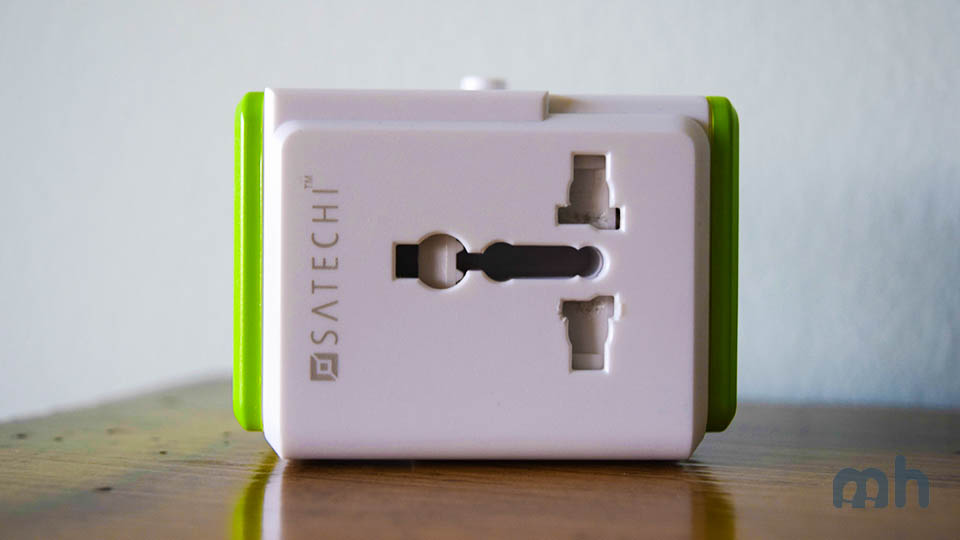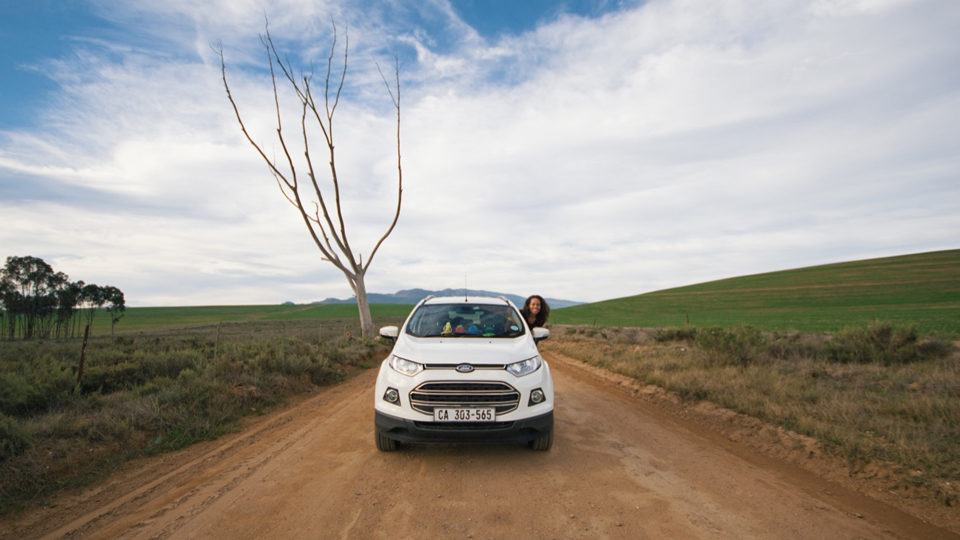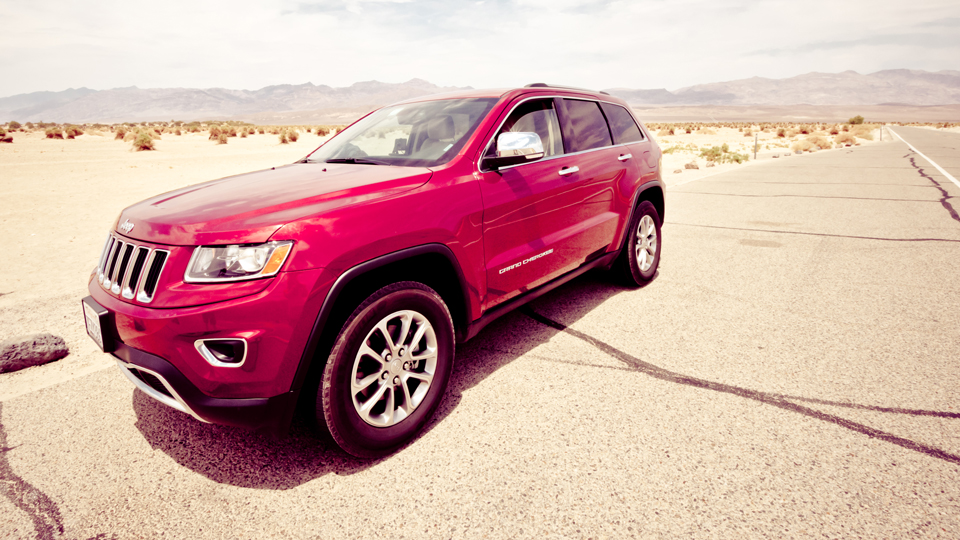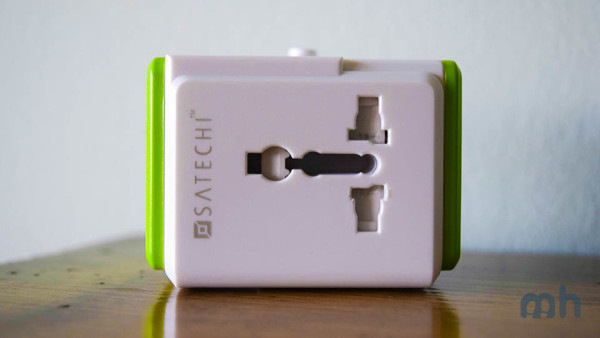
There’s power adapters, and then there’s the Granddaddy of all travel adapters. Unfortunately, this means I’m going to have to eat my words about what I said about this generic $3 adapter I energetically wrote almost three years ago. (It’s still awesome as a budget, no-frills adapter.)
At the time, my best friend and I were commiserating about the perfect travel adapter. The dream? Accepts all prongs. One piece, no loose parts to worry about. Requires one power slot. USB charging. I just had no idea that it existed and that, actually, a product similar to that existed on the market. Not only is it better than I imagined it, I can say almost after almost a year with daily hands-on experience with it, this is probably one of the niftiest travel gadgets I've ever come across.
The Satechi Travel Router is like a rare and mythical beast that only exists in most Kickstarter fantasies. It’s a one-piece travel adapter that accepts all pins worldwide and has two ports for USB charging. The part that blew my mind is that it also includes a travel router in the same form factor, which is perfect for hooking up to a hotel’s paid Wi-Fi connection and spreading some of that Internet love to multiple devices.
The Satechi actually comes in two flavors, one without the router and one with the router. The router-less version retails for $14.99 on Amazon—which is still totally worth it—while the fun-filled router version of the product retails for $39.95 on Amazon. I actually managed to snag the beefed-up version for $34.99 off TheNextWeb, so it’s possible to get it for cheaper by looking hard around the interwebs. I’m close to declaring this the best $35 I’ve ever spent for myself the site.
In comparison, the router-less version is not a bad deal either. If all you’re after is a simple travel adapter with USB charging, this particular Mudder Universal International Adapter seems like a solid stand-in for a bit less money. It’s about a dollar cheaper at $13.99 on Amazon. Perhaps the biggest thing to be aware with USB slots is to make sure they are built for phone and tablet charging, not just phone charging. More on that later.
Meanwhile, the adapter itself measures at 2.75 inches x 2.5 inches x 2.5 inches (6.99 cm x 6.35 cm x 6.35 cm), which is actually about the same size as most all-in-one travel adapters I’ve seen, including the generic ones I wrote about previously. It weighs about 5.6 ounces (159 grams), which is a bit heavier but seems to be about the same weight as the Targus World Power Travel Adapter.
All considering, the Satechi Travel Router packs a decent punch in a relatively small form factor. It’s not possible to go smaller without removing some core functionality.
Converting
Like most power adapters I’ve reviewed, the Satechi Travel Adapter doesn’t convert voltage but adapts for different types of plugs worldwide. (Be very, very careful blowing it out with a hairdryer! This is where cheapo adapters are great.)
It not only accepts the major four types of plugs—U.S., European, British, and Australian—but it also converts to all of those plugs as well. While that doesn’t sound like a lot, that actually covers the majority of the world as most countries often default to one of the four, one of the few beneficial remains of imperialism.
Ironically, the area where the adapter is most likely going to run into problems is strange, 3-pronged international configurations. My research seems to suggest that it’ll be pretty rare that you’ll run into a problem, though. For those wondering, it does accept 3-pronged U.S. plugs.
Perhaps the one thing I wasn’t totally keen on it is that certain plug types seemed a little difficult to plug into the device, at least at first. The tight was fit and I was a bit scared of breaking it but it did eventually accept every single plug I threw at it. Perhaps this is how you know when you travel too much: when you have every international plug available to test on hand!
Outlet Ports
The ideal power adapter also must be fit into one power slot. The Satechi more or less fulfills this req, depending on the plug you're using. At any rate, it's possible to plug in the router in a way that leaves the remaining slot open. It is one of those things that can go either way: it's also possible to obscure the remaining power slot. However, there is usually a maneuverable way to manipulate the thing into the damn socket without doing so.
(It's not that big, guys!)
It's worth noting that I didn't test this in one of those circular outlets that are so predominant throughout Europe, but my experience is that most square travel adapters have zero issues being plugged into one of these things. Neither did this reviewer:
I used mine all over Europe and it worked great!
USB Charging
There are two! USB slots. It basically means that Christmas came twice. Kidding. Christmas is a week at a five-star resort in Fiji, so let’s get on with it, shall we?
The two slots clock in at 5Vdc at 2.1 amps. To the unaided eye, this means shit. To trained eyes, this means two things: it supports tablet and phone charging at the optimal, recommended speed. Though USB power adapters seem like carbon copies of each other, it actually doesn’t mean one USB power adapter will charge an iPad at the same rate of another power adapter. The number of amps plays a crucial difference.
Most phones charge at 1 amp. Basically, that means if you stick in a tablet that’s designed to charge at 2 amps into a 1 amp adapter, it will take twice as long to charge the device because it’s only possible to charge at half the rate of the electrical current it was designed for.
Here’s a quick chart of amp requirements and a great explanation from Apple to illustrate the difference:
| Source | Voltage | Current | Power |
|---|---|---|---|
| PC USB | 5 volts | 0.5 amps | 2.5 Watts |
| iPhone Charger | 5 volts | 1.0 amps | 5 Watts |
| iPad Charger | 5.1 volts | 2.1 amps | 12 watts |
If it takes an iPad charger 5 hours to charge up an iPad, with the iPhone charger it will take 10 hours to charge because it is about ½ the watts and amps. Make sense? It’s basically doing the math. In the scenario above, charging with a PC will take 4 times longer because the USB port is ¼ the output of the iPad charger and ½ the output power of the iPhone charger.
There’s nothing wrong with charging a device at a higher amp than it was intended for; problems only occur when a device is charged at a lower amp that what it was intended for. In fact, if all you’re looking for is a travel adapter with USB slots for phone charging, than you can’t go wrong with the Mudder adapter referenced above.
Router Functionality
To be honest, when I saw that the Satechi Smart Travel Router came with a router, I was expecting handicapped, hodgepodge functionality. I certainly didn’t think that it would include space for an Ethernet cord, a reset button and even include its own light indicators.
In terms of technical specifications, it supports 802.11 b/g/n up to 150Mbps and can function as an access point, router, repeater and client. There also several modes for wireless security if you’re not happy with the defaults: 64/128/152-bit WEP, WPA/WPA2, WPA-PSK/WPA2-PSK. There are no included firewalls, so if you’re looking for more, look elsewhere.
The nice thing about all of this is that Satechi has made it as easy as possible for most people with no real technical knowledge to get up and running. Not only is the network name (SSID) and MAC ID printed on the router—although, in our case, it did accidentally get rubbed off in under the course of a year—the factory defaults for router administration are printed on the device. It’s practically impossible to forget the key details! (Do take a photo of the MAC ID.)
To start the initial setup, it just needs to be plugged in. Once you’re connected to the router network, you’ll have to log into the numbered IP address that’s listed on the router itself to get started. (The password for the network is actually the same as the user administration password.) From there, it’ll walk most users through the settings until they are connected with a simple wizard. It took me less than a minute to set it up.
The Airplane and the Hotel Test
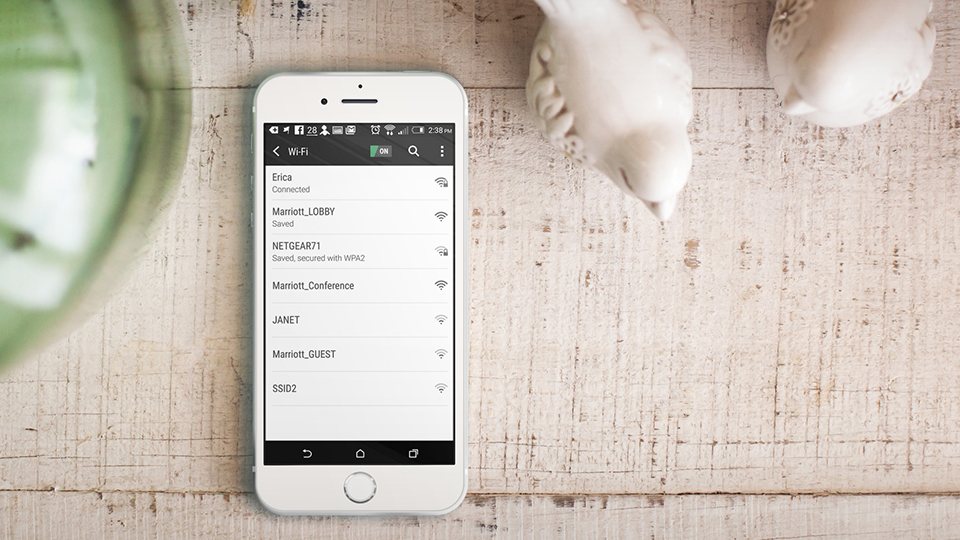
All set up. (Placeit)
Can you imagine my joy once I plugged it into a transcon United flight and suddenly had Wi-Fi going on all four devices? While only having to pay for one connection?
Just managed to get in-flight Wi-Fi for all my devices on the plane —paying for only one connection. #hookeduplikeacokeaddict #hackmaster
— Erica Ho (@ericamho) April 28, 2015
If you're the type of traveler where airports and hotels are your second home, I found that the Satechi saved a lot of hassle from having to continually switch between devices and re-entering passcodes. Never mind the money that's being saved paying for an additional device. (Maybe the home is the real second home.)
I didn't have much issue using its other features, like its ability to act a a repeater or extender, in apartments or Airbnb where there could often be a hard-to-reach corner where it was hard to get interweb access. Maybe this underscores how much I like to internest in bed.
It also got trucked around to many different properties like the Marriott, etc. and performed fine with no issue. There does, however, seem to be one serious flaw to the router: It has trouble identifying and registering networks that seem to have a space in it. Amazon reviewer Dave LaDelfa noted this:
I was actually pretty happy with this unit, until I got to a hotel where the SSID I needed to connect it to had a space character in it (e.g. "ACME HOTEL"). The Satechi unit has no way to connect to a network so named and no workaround (i.e. by BSSID or MAC), and in fact it can't connect to a network if the password contains a space character either, though I suspect this is less common.
…So unless you can guarantee that you'll never ever need to use this in a place where the SSID or password doesn't have a space in it—and let me reiterate that these are two things you almost never have any control over, because you're a guest user and not the hotel's IT Administrator—you will always run the risk of getting somewhere and not being able to use this as a router, which makes it just a plug adapter with a USB port and that's worth five bucks, not fifty.
Thankfully, this was not an issue I ever ran into. But for users that encounter the problem, there does seem to be a workaround. Reviewer M C points out that:
I was able to fix it by doing the following:
- Select the appropriate network name from the drop down, in this case "Airport Extreme"
- On the next page, all that transfers is "Airport."
- If you manually type in the rest to match your SSID exactly, "Airport Extreme," type in the password and press connect it worked.
Still, this is something that Satechi should definitely fix in their next firmware update.
Disabling the Router
The really, really nice thing is it’s possible to disable the router function if there’s no need for it. This requires logging into the user administration and then going into the advanced section. After navigation to Wireless Settings > Basic, there will be a button for WiFi Off. Hitting this button disables router functionality but the indicator light will still remain on, though it won’t flash nearly as much. The only way to turn this back on to is hit the reset button.
I was able to turn it off but if you’re doing this in the hopes of killing the indicator light completely so you won’t have to sleep in a disco nightclub, fat chance. You’re better off covering the light with a shirt or some duct tape. Unplugging it is another option but it will only ensure that the phone will have no juice in the morning.

Getting into the thick of it. (Placeit)
It also has a nice advanced interface, which is only available once the connection is completely setup, for users used to tinker with on their router. However, its initial admin is set up in a way that’s super simple for anyone to easily get up and running, and includes changing the network name and password. (It will, however, disconnect you, if you change it. Duh.)
The settings are stored in the adapter if it needs to be unplugged and replugged. The only time that it needs to be set up again is if it can’t find the network or if the hotel doesn’t support it.
Final Thoughts
I have also found it to be a great device at home, not to say that’s the reason to buy it for. I’ve also found I can easily hook up my iPad cord and Micro USB cord to it to charge my tablet and phone simultaneously. At the same time, I’ve stuck my nightstand lamp into it—it's possible to do U.S. to U.S. pins after all!—and have stuck it into the bottommost plug of a two-outlet station near my bed. In short, I’ve managed to use one plug for three devices. (I don't encourage anyone to do this to be careful lest you short out an outlet or device!) Amazing!
It’s also possible to use it as a traditional wireless router and include hardwired Ethernet connections through it. Most people won’t find that this to be a big deal since they most likely already own a router at home but I guess it’s great for me, because my home is on the road. Otherwise, I usually prefer to live by myself, sans roommates, and it’s often hard justifying the cost of a router for all of my four hungry children (desktop, laptop, iPad, cell phone).


